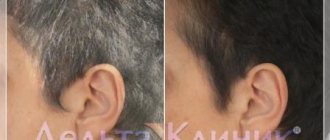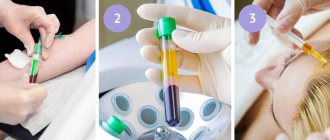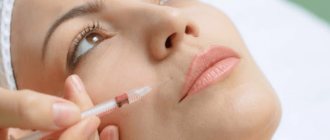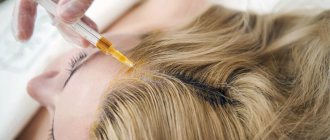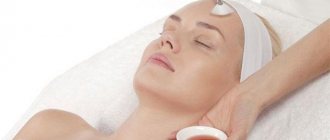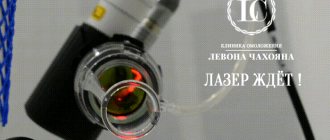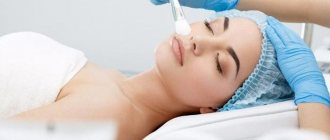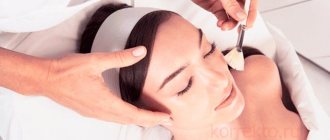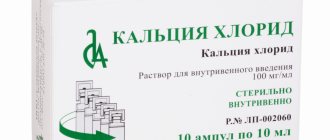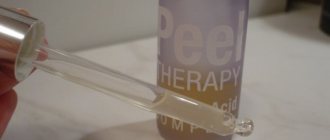One of the advantages of mesotherapy is the ability to combine it with other cosmetic procedures without harming skin health. Mesotherapy after peeling is a fairly common combination of techniques that increases the efficiency of absorption of nutrients in tissues, and, accordingly, accelerates the achievement of the desired result. However, let's figure out whether cosmetologists really consider such a complex safe?
Double benefit: nutrition and cleansing
Mesotherapy is a minimally invasive cosmetic procedure that involves the introduction of special preparations into the structure of the dermis. They saturate epithelial cells with useful substances and awaken natural metabolic processes in tissues that slow down with age.
Peeling helps eliminate dead epithelial cells and renew the upper layer of the dermis, due to which, with subsequent mesotherapy, the efficiency of absorption of nutrients increases. They penetrate the epithelial cells much faster, saturating them with the necessary components.
Mesotherapy after 40
Unfortunately, 40-50 years is the most active age of skin aging. During this period, women notice strong changes in appearance associated with a lack of nutrients in the dermis and disrupted metabolic processes.
At this age, mesotherapy helps them cope with the following problems:
- Flabbiness, dullness of the skin.
- Dullness.
- Pigmentation.
- Swelling.
- Dark circles under the eyes.
- Cuperosis.
- Spider veins.
However, to improve the overall condition of your skin, you will have to undergo quite a few sessions. This is due to the cumulative effect of the procedure - all beneficial substances gradually accumulate in the skin, arriving there in small concentrations, which makes the procedure as safe as possible.
Does the type of procedure matter?
Mesotherapy after peeling is now performed quite often and is sometimes recommended by cosmetologists to prepare the skin for the main procedure.
However, it is important to consider that there are different mesotherapy techniques:
- Manual. The drug is administered pointwise using a syringe and a thin cosmetic needle.
- Hardware. Mesococktails are evenly distributed in the dermis of the face, thanks to the use of a special apparatus equipped with a large number of needles.
- Non-injection. In this case, the skin is not damaged, and beneficial substances penetrate the skin due to the influence of electromagnetic pulses.
If, when performing injection methods of administering drugs, the combination of mesotherapy with peeling will significantly increase the effectiveness of manipulations, then in the non-injection method, preliminary exfoliation of the skin will not be of particular importance.
Also keep in mind that before mesotherapy, only light, superficial peels should be performed - mechanical or chemical. Sometimes cosmetologists prefer glycolic ones, but they are less common. This way you will avoid severe stress on sensitive facial skin.
Photos before and after
In the photo you can clearly evaluate the effectiveness of mesotherapy and see how the procedure restores facial skin in women of different ages.
However, keep in mind that in any case, to achieve the desired result you will have to undergo a course of sessions. A one-time administration of a meso-cocktail will be absolutely ineffective.
Procedure
If you decide to perform both methods, first consult with a cosmetologist so that he approves of your desire. This way you can protect yourself and prevent complications.
Peeling - chemical, mechanical or glycolic, is performed exclusively by cosmetologists. This significantly reduces the likelihood of severe tissue damage. Then the mesotherapy itself is performed.
The girl does not require any special preparation for mesotherapy; it is carried out during the session itself - the facial skin is cleansed of impurities and cosmetics, and then treated with a disinfectant solution of Chlorhexidine. When performing injection methods of administering the drug, an anesthetic is first applied.
Then the procedure itself begins:
- A selected meso-cocktail is applied to the skin in a thick layer.
- The master begins work. When performing the manual method, he precisely injects the drug into the tissues using a syringe. The hardware method involves the use of larger equipment that creates many punctures in the skin.
- The entire facial skin is gradually treated using the chosen method. This usually takes no more than twenty minutes.
- At the end of the session, excess meso-cocktail is removed, and the skin is treated with a disinfectant solution.
- A soothing lotion is applied.
Since the skin was previously cleansed with peeling, the meso-cocktail penetrates the skin much more effectively and quickly. Due to this, the session lasts 1.5-2 times less, and you will be able to notice the effect of the technique faster.
Indications and contraindications for mesotherapy for neurological problems in the patient
In modern medicine, mesotherapy sessions are successfully prescribed and used for the following neurological diseases:
- dizziness;
- noise in ears;
- osteochondrosis and spondyloarthrosis;
- damage to spinal discs as a result of trauma;
- dysfunction of the spinal segments;
- pathology of muscles or ligaments;
- headaches and migraines, including those caused by cervical osteochondrosis;
- cerebrovascular accident;
- neurotic disorders, sleep disorders, panic attacks.
Before carrying out mesotherapy, it is necessary to undergo examination and examination by the attending physician, who should determine the absence of contraindications to the treatment course of subcutaneous injections. Contraindications to mesotherapy include:
- skin damage or tumors in the affected area;
- individual intolerance to drugs;
- inflammatory diseases of internal organs;
- pregnancy;
- diabetes;
- blood clotting disorder;
- tendency to form colloidal scars.
Mesopeeling
Since the effectiveness of the combined effects of peeling and mesotherapy was noticed quite a long time ago, many salons now have an improved procedure - mesopeeling.
Its essence lies in combining techniques by adding glycolic acid to the composition of the meso-cocktail. It will create a peeling effect when applied to the skin.
The peculiarity of the procedure is that immediately after cleansing the skin, the composition is introduced into the upper layers of the dermis - to a depth of 1-2 mm. Due to such a gentle effect, the technique has virtually no risk of complications and undesirable consequences, and the recovery period after it takes no more than a day.
Combination of mesotherapy and glycolic peeling
Glycolic acid is characterized by a complex effect on the skin, which affects the main links in the pathogenesis of skin aging:
- exfoliation of the stratum corneum; the uniqueness of the action lies in the fact that the size of the molecule is very small, and this promotes deep penetration of the acid, where it destroys desmosomes (connections between corneocytes), imitating and forcing the physiological process of exfoliation of cells of the stratum corneum, which results in an improvement in complexion and the skin acquires healthy and radiant appearance;
- irritation of skin receptors provokes vascular and inflammatory reactions, and also promotes the release of mediators that stimulate regeneration processes in the skin;
- stimulation of keratinocytes promotes restructuring, renewal and thickening of the epidermal layer;
- stimulation of fibroblasts blocks degenerative phenomena in the elastic and collagen fibers of the dermis. The result is an increase in skin turgor and elasticity. The skin becomes elastic, wrinkles are smoothed out.
However, this procedure carries a risk of complications, such as:
- prolonged congestive erythema,
- hyperpigmentation,
- infectious complications,
- Sometimes glycolic peels cause acne to worsen.
The combination of mesotherapy and glycolic peeling procedure allows you to prepare the skin for aggressive effects and minimizes the risk of complications . Glycolic acid in cosmetology gives a pronounced therapeutic result and rehabilitation in a shorter period of time.
In what cases is it advisable to recommend this combination:
- prevention of skin aging caused by stressful situations, smoking, excessive insolation, as well as immune and endocrine factors;
- glycolic acid in cosmetology helps if there is deep skin dehydration, superficial wrinkles, reduced turgor and elasticity;
- post-acne (prevention and correction of scar changes);
- preparing the skin for the correction of atrophic scars and other skin defects with fillers, as well as for the introduction of implants;
- peeling with glycolic acid and mesotherapy help prepare the skin for plastic surgery, deep and medium peels in order to optimize the final result and reduce the rehabilitation period;
- skin rehabilitation after plastic surgery.
Planning the course is preferable in late autumn and/or early spring, depending on the condition of the skin, 1-2 times a year. Recommended course: 6-8 procedures once a week Conventionally, the course can be divided into a preparatory stage and, in fact, the course itself.
At the preparatory stage, the patient takes orally fat-soluble antioxidants, zinc, selenium, omega-3 acids, coenzyme Q two weeks before the start of the course and throughout the course. Dysfunction of the antioxidant system, associated with an increase in reactive oxygen species and activation of free radicals as a result of lipid peroxidation, has a negative impact on cellular homeostasis in general and on the skin in particular. Therefore, it is so important to create a depot of antioxidants in advance, which will prevent free radical induction of melanogenesis and oxidative stress from subsequent glycolic peels, and also strengthen the overall immune status.
Along with taking antioxidants internally, it is recommended to use external creams containing glycolic acid 5-10%, pH at least 3.5 for 10-14 days and fat-soluble antioxidants.
At the main stage, mesotherapy and glycolic peeling procedures (first peeling, then mesotherapy) are combined in one procedure with an interval of 8-10 days, or peeling is carried out first, mesotherapy is carried out in the next three days, and peeling again after 7-8 days.
As in a standard course of glycolic peeling (4-6 procedures), it is necessary to comply with the rehabilitation period; within 4 days after peeling, use skin regeneration preparations with glycolic acid. In addition, glycolic peeling requires the use of sunscreen throughout the entire course. The concentration of glycolic acid for procedures is selected individually and depends on the biological resource of the skin.
Mesotherapy is carried out with the aim of strengthening the antioxidant system of the skin, reducing the likelihood of melanogenesis, improving the quality of regeneration and reducing the rehabilitation period. As in the classic course of mesotherapy, drugs are selected individually.
Among the antioxidants used are drugs such as:
- ubiquinone,
- vitamin E,
- drugs that improve blood supply to tissue: lofton,
- pentoxifylline.
- D-panthenol,
Add to cocktails:
- local anesthetics;
- procaine;
- coenzymes (cocarboxylase) to enrich cells with oxygen and energy to carry out synthetic processes: proliferation and neocollagenesis;
- oligoelements Se, Zn;
- organic silicon preparations that provide regeneration by accelerating division and have an antioxidant effect. They retain free radicals that destroy cell walls, and also effectively restore skin elasticity - increases the biosynthesis of collagen and elastin.
- hyaluronic acid maintains the necessary level of moisture, restores and protects the skin.
- The Ribomunil vaccine is used to prevent exacerbation of acne.
Peeling with glycolic acid is often carried out using ready-made cocktails, which contain substances that stimulate the natural restoration of the skin, a complete “material” for cell growth. They promote the active formation of collagen, elastin and hyaluronic acid, which radically improves skin quality.
It should be remembered that not everyone is ready to gain youth at any cost, which is why “conservative” procedures in cosmetology are so relevant, with the shortest rehabilitation period, although sometimes more expensive. Everyone wants a guaranteed and safe (without complications) result! In this case, peeling with glycolic acid and mesotherapy provides many benefits. Effective prevention of oxidative stress and melanogenesis, improving the quality of regeneration and reducing rehabilitation time. After all, it is important for us not only to improve the quality of the procedure, but also not to cause harm.
The material was prepared by Marina Son , dermatologist-cosmetologist
Combination in one day
Despite the fact that peeling and mesotherapy combine well and do not greatly damage the skin, both techniques should not be performed on the same day.
Cosmetologists recommend peeling 2-3 days before the main procedure. This way you can reduce the burden on sensitive facial skin, preventing unwanted consequences.
In addition, especially sensitive skin after peeling often needs time to recover - 1-3 days.
Why should you give up exercise?
Even light meso-cocktails can give a negative reaction if you violate the traditional recommendations for this procedure for the recovery period. Going for sports on the day after medical procedures can provoke vasodilation, which can lead to accelerated elimination of substances introduced into the tissue. Another obvious risk is getting an infection, which can easily enter through open pores. Moreover, increased sweating during sports can cause skin irritation.
Of course, it is difficult for people who are actively involved in sports to give up training for a long time. But mesotherapy does not require a significant change in plans. In order for the results of a not at all cheap cosmetic procedure to be quite impressive, and for the money to be well spent, it is worth making sure that compliance with the recommended regimen is accurate and complete. And the patient will be able to return to training after the rehabilitation period is over.
Sign up for a free consultation!
Peeling after mesotherapy
Mesotherapy after peeling is an excellent combination, but vice versa? No, it is important to take into account that after introducing meso-cocktails into tissues, they need to be given a little time to recover, which is associated with mechanical damage to the skin when creating punctures.
If you exfoliate or use a scrub after mesotherapy, be prepared for a severe skin reaction. It manifests itself in the form of pain, increased sensitivity in the treated area, burning, peeling, itching, redness and even rash. Side effects are associated with a violation of the integrity of the dermis, after which it will have to recover up to 1.5-2 weeks.
Recommendations for care after injections
Despite the safety of mesotherapy, it involves a violation of the integrity of the skin. Because of this, it can lead to serious complications and side effects if the recommendations and precautions prescribed by the specialist are not followed.
There are not many such restrictions prescribed, but it is important to pay attention to them:
- Avoid washing and applying cosmetics for 4 hours;
- Stop smoking and drinking alcohol and energy drinks for 6 hours;
- For three days, avoid visiting the bathhouse, sauna, or taking a hot bath;
- Stop taking blood thinning medications and do not sunbathe.
You need to follow recommendations and precautions after each mesotherapy session, regardless of where you performed it - in cosmetology or at home.
Reviews
Natalya, 34 years old: Good afternoon. I have been doing mesotherapy for quite a long time – I started about 3 years ago and every time I am delighted with its effect. Last time, the master offered me a new type - mesopeeling, promising more obvious skin rejuvenation and elimination of pigmentation (which is what I am struggling with). And you know, I really liked the effect! After the first session (and this had never happened before), the skin became smooth, tightened, I didn’t even want to use cosmetics after it. I recommend it to everyone!))
Tatyana Alekseevna, 51 years old: I haven’t risked combining mesotherapy and peeling before, my skin took a long time to heal after mesotherapy, and then there was an additional burden... But I decided to do it anyway, and... I didn’t regret it! I liked the result, but I can note that the session itself was more painful, which is tolerable. In general, I will most likely repeat this combination once a year.
